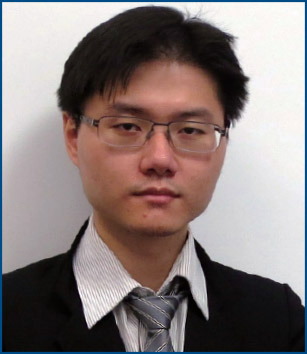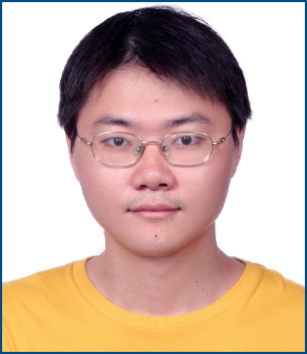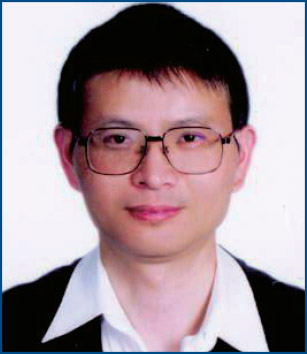March 22, 2023
Tax Cuts No Guarantee for Taiwan to Maintain Taiwan’s Chipmaking Lead Tax cuts passed by the Legislature in January, 2023, are just one step of many that need to be done to prepare Taiwan’s semiconductor manufacturers for future competition with other companies in the chipmaking field. Lawmakers passed amendments to the Statute for Industrial Innovation offering income tax cuts of up to 50% from Jan. 1, 2023 to Dec. 31, 2029 for companies that meet the requirements that are engaged in work that innovates technologies domestically and occupy a critical position in international supply chains. The intention is that semiconductor manufacturers will continue to invest in Taiwan and help cement its standing as the world’s second largest semiconductor supplier. Experts at the Taiwan Institute of Economic Research say that one area to expand on is wafer fabrication. Currently, Taiwan has a relatively low output of materials and equipment for wafer fabrication, which are mostly imported, and if it wants to have more control over supply chains, it must work to address that weakness. Another aspect to global competitiveness is that, as other economies such as South Korea, Japan, Europe and the U.S. pick up the pace to bolster their own positions in their respective semiconductor supply chains, it is highly likely that they will try to poach semiconductor engineers from Taiwan. Offers of competitive salaries, good social welfare terms and green cards could prove enticing for research and development personnel and executives at Taiwanese semiconductor companies. The College of Semiconductor Research sponsored by the public and private sectors is well placed to help Taiwan produce future skilled workers and... February 27, 2023
Taiwan Makes Revisions to Patent Examination Guidelines The Taiwan Intellectual Property Office made some revisions regarding procedural examination and patent rights management that came into effect in December, 2022. In Chapter 1 of the guidelines, the use of electronic signatures will be accepted provided both parties can agree to the validity thereof. The signee only needs to provide a form of signature (whether it be a signature, stamp, or electronic signature) that matches the signature on the application documents. In Chapter 3 of the guidelines, in accordance with adjustments made to procedural examination, revisions have been made to 3.1 Inventor Change, 4.1 Applicant Name or Title Change, and 4.5 Inventor Name Change. Case studies have been included to help the public better understand the principles of examination. The revisions also specify that applicants who are able to rectify inconsistencies on documents submitted with their applications do not fall under this category. In accordance with a judicial ruling, TIPO also included a case study explanation regarding name changes for different applicants who belong to the same entity. In Chapter 5 of the guidelines, procedures regarding three relevant scenarios concerning postponing the filing date, namely change in applying entity, addition of listed applicants and decrease in listed applicants have been clarified according to the relevant regulations. Taiwan Releases New Trademark Distinctiveness Examination Guidelines The Taiwan Intellectual Property Office released new examination guidelines for trademarks which came into effect on September 1, 2022. Here are some of the most notable clauses: Concerning words, when a word or combination of words is using a descriptive style, if it is depicted in a special... December 28, 2022
Taiwan’s Judicial Yuan Announces Draft Amendment to the IP Case Adjudication Act Here are the highlights of what is likely to be the biggest overhaul of the IP Case Adjudication Act since it was implemented in 2008: The administrative remedy system for patent and trademark cases will change from the current administrative litigation system to the adversary system. If a party files an appeal with the court against a Decision rendered by the IP Office, the case will be tried in accordance with the civil procedure, and the defendant, depending on the nature of the case, may not be the IP Office, but instead may be the opposing party such as an invalidation petitioner, or the applicant of a cancellation action. Civil disputes relating to patents, software copyrights, and trade secrets will be mandatorily represented by lawyers. Unless the value of the plaintiff’s claim is low, that rule will be valid for other civil cases too. In principle, the court should discuss with the involved parties via their lawyers regarding the planning of a trial unless the case does not require legal representation. In patent litigation cases, the judge shall, in a timely and appropriate manner, disclose his or her interpretation of any disputed terms recited in the claims, ex-officio or upon the request of a party. Currently, reports drafted by court experts formally known as Technical Examination Officers (TEOs) are not disclosed to any parties. The Amendment now makes it clear that when a judge deems it necessary, he or she may disclose all or part of the content of the Reports drafted by TEOs and the parties... November 17, 2022
Revisions to the Examination Guidelines on Distinctiveness of Trademarks Took Place in September in Taiwan To enhance the examination principles for distinctiveness of various types of trademarks, the Taiwan Intellectual Property Office has promulgated revisions to the Examination Guidelines on Distinctiveness of Trademarks. TIPO has made the revisions to ensure that the basis on which distinction is determined for trademarks aligns with current market transactions. The main revisions are as follows: More details have been added to the different composition patterns of foreign alphabets. Reference examples for determining whether descriptions are designed and distinctive have been provided. Assessment criteria and examples for alphanumeric combinations and numbers have been added. Examples of popular graphics, purely informational graphics, and commercial design graphics have been added. Criteria for country names, geographical images, and geographical names used in descriptions of product origin as well as misleading use or misrepresentation have been added. Assessment criteria and reference examples for names and portraits of well-known public figures who are recently deceased have been provided. Revised criteria for slogans, common words, new terms and idioms have been added. Trademark graphics which include the full name of the company or domain names are considered strictly informational in order to prevent affecting the certainty of the scope of trademark rights and the function of correctly indicating the source of the product or service in the event that trademark rights are transferred or there is a change of name after registration. Taiwan’s Supreme Administrative Court Affirms Artificial Intelligence Inventions Not Patentable The Taiwan Intellectual Property Office and the Ministry of Economic Affairs has rejected several applications invented by AI. ... October 17, 2022
Taiwan IP Office Adjusts Guidelines for Parallel Filing Effective July 1st 2022, the Taiwan Intellectual Property Office has ordered some changes to the Patent Examination Guidelines. Concerning parallel filing, there were some questions as to how the IP Office should handle a pending invention patent application if, in the meantime, the granted utility model that covers the same subject matter is invalidated. First of all, it should be noted that filing an invention patent application and a utility model application on the same day, by the same applicant and for the same subject matter, is a commonplace and practical strategy for getting early protection of an invention. Utility models, giving protection of the shape and structure of an article, aren’t examined substantively, so they will be granted protection within just a few months. On the other hand, the examination of an invention application for the same subject matter will take longer. That could take up to one year or so, and if the invention patent application is allowed, the applicant can then opt for either the allowed invention application or the already granted utility model. If the former is chosen, the utility model rights will be extinguished. With the new guidelines, the procedure about how to deal with parallel filings when the granted utility model is invalidated has now been decided upon. Now, the validity of an invention patent application must remain consistent with the validity of the granted utility model. If the utility model invalidation is appealed, the examination of the invention patent application should be suspended during that process. The applicant does, however, have the right to... By Firm
Key Person Profile
Upcoming Events
Recent Past Events



 Deep & Far Attorneys-at-law
Deep & Far Attorneys-at-law Yu-Li Tsai
Yu-Li Tsai Lu-Fa Tsai
Lu-Fa Tsai C. F. Tsai
C. F. Tsai





